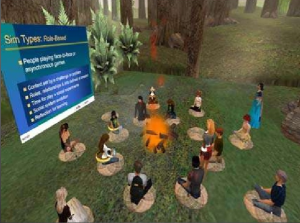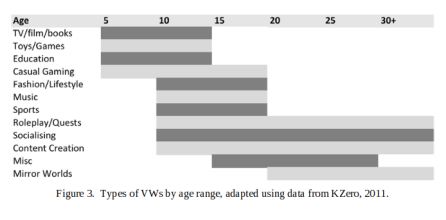 Teaching college online part-time varies greatly across institutions. Courses can range from 6 to 8 weeks, or up to 16 weeks long. You may or may not have to design the online curriculum, and possibly give up copyright. You may have 10 students or you may have 100. All of these variables should come into your early discussions around job expectations, and help you determine whether the pay is worth your time.
Teaching college online part-time varies greatly across institutions. Courses can range from 6 to 8 weeks, or up to 16 weeks long. You may or may not have to design the online curriculum, and possibly give up copyright. You may have 10 students or you may have 100. All of these variables should come into your early discussions around job expectations, and help you determine whether the pay is worth your time.
In general:
- Part-time teaching: typical pay can range from $1,500 – $5,000 per class, $2,500 around average. You will be hired as an independent contractor.
- Full-time teaching: Pay and benefits should be the same as a regular job in the field, you’ll be hired as an employee.
- Are you teaching someone else’s curriculum or designing your own?
- If designing your own, ask if there is development money to support your work and who owns copyright.
You can see you’re probably not going to get rich teaching part-time online at the higher ed level. Typically, it serves as a supplemental income. As soon as you go full-time, the pay and benefits should be the same as the regular teaching job in your industry. You may ask yourself, why would anyone work for so little money over a potential 15-16 week period? Freedom, my friend, freedom to work from home, work at a time that meets your needs, and develop that work-life balance. And supplemental income is good! If you teach multiple sections of the same course, the workload becomes easier, and your revenue potential increases.
The pay varies widely in online teaching–this is often due to the online curriculum itself–if you have to create your own, the pay is usually more. So the first aspect you need to consider when you’re teaching online is if you are teaching someone else’s curriculum or are you designing your own. At large online universities, you are most likely teaching a canned curriculum that they want taught consistently among all courses in order to meet standards for accreditation. You wouldn’t be responsible for developing lessons or materials, in this case. For some online teachers, this is a wonderful thing. For others who enjoy that aspect of teaching, this may be a deciding factor in whether or not you want to teach for that institution. I always design my own curriculum, and wouldn’t want to work where I had to teach a canned curriculum. But again, this is my personal preference.
At other institutions and state universities where they may only need one course taught, or they are putting a few new courses online, you may be asked to build the content. There are many hours involved in curriculum design in addition to the day-to-day teaching and interaction with your students, and you’ll need some basic comfort with creating online lessons, embedding graphics and video, using a variety of apps to make the content feel “alive,” as well as engaging and interactive. Knowing some basic principles of graphic design are essential.
Typically, when you have to design your own curriculum, there’s development money that goes along with that, not always, but sometimes. It’s not considered inappropriate or unprofessional to ask about curriculum design stipends in addition to the teaching stipend. I’ve often been offered development money to design courses in addition to the teaching salary.
Copyright – Who Owns the Curriculum Design?
If you’re creating online lessons, multimedia tutorials, graphics, etc., you need to know who owns the copyright to that material, and that becomes critical, because whomever owns the copyright gets to keep it. So if a university agrees to pay you $2,000 to build a curriculum and they own the copyright, that means you can never use or sell that content again without their permission (and they usually don’t give permission).
For example, let’s say you get a job teaching part-time at Amazing University, and you develop an online course for freshman History 101, but assign copyright to the university. You create all these great multimedia tutorials, interactive assignments, and lessons, and then that course ends up being taught again and again and again, but by other instructors as well, because they need more than just one instructor to teach History 101, or because they don’t want hire you back again. The University maintains the right to take those materials and use them in any way, shape or form with any instructors they wish without compensating you, and you lose the right to take those materials and teach them at any other university. It might be worth it to you if the pay is high enough.
I advise all curriculum designers to own, or at least share, copyright on their work with their employer. Typically when you’re a university employee, whatever you do on university time belongs to the university, unless their Intellectual Property policy states otherwise (many universities make exceptions that online curriculum design belongs to the faculty member). So that distinction needs to be clear and there actually needs to be a discussion and written agreement upfront as to who owns those materials. An email confirmation is ok, something listed on your contract is better.
Leveraging Your Curriculum Design
One strategy for leveraging your course design is to resell that content and/or teach it at multiple institutions. If you find one institution that wants to hire you to teach a specific course (or you can interest them in a new elective on a “hot topic” where you are the expert), work to maintain copyright on that course, don’t sign any “non-compete” agreements, and then sell and/or teach that course at multiple institutions. There is nothing unethical about this approach, it is business, so take your agreements seriously, and make sure everything is in writing. If you just assume you can resell your content, and you end up violating a copyright agreement, you will harm your reputation, lose a teaching job, and possibly end up receiving a cease and desist notification from the university’s general counsel (attorney). So play it safe, and know your rights up front!
Proposing a “hot topic” elective course to your interviewer (if it’s a department chair) will always be of interest. Chairs need student enrollments. The worst that can happen is you’ve planted a seed for them to consider, so don’t take a “no” personally or as the final word.
Tip: Toward the end of your first interview with the potential employer, ask questions around job expectations if the employer doesn’t provide the information up front. What period of time is the course? How many times a week are you expected to login? Average number of enrolled students? What is turnaround time for getting back to students? Will you design the curriculum, and if so, what is the additional compensation and do you retain copyright? Is there a flat rate compensation or is it a per-student fee model?
I’m curious to hear about your experiences with curriculum design, copyright and adjunct instructor pay, please share!
Want to learn more?

This blog is fourth in a five part series to help you get focused on finding a job teaching college part-time online.
If you’re looking for additional tips with finding and landing online teaching jobs, get a free digital copy of my book, Find Online Teaching Jobs Now! College Edition, through April 24th, 2017 at Amazon!
 Cyborg, a person whose physiological functioning is aided by or dependent upon a mechanical or electronic device.
Cyborg, a person whose physiological functioning is aided by or dependent upon a mechanical or electronic device.
 Your mission, should you choose to accept it, is to join the team at Carolina to explore and invent the latest innovations in game-based learning. Offered by the School of Education and MEITE (M.A. in Educational Innovation, Technology & Entrepreneurship), this course engages learners in quests personalized to their interests and goals in game-based learning.
Your mission, should you choose to accept it, is to join the team at Carolina to explore and invent the latest innovations in game-based learning. Offered by the School of Education and MEITE (M.A. in Educational Innovation, Technology & Entrepreneurship), this course engages learners in quests personalized to their interests and goals in game-based learning. Hi friends, I’m so very proud to announce that I’ll be joining the School of Education at UNC Chapel Hill to serve as a professor and Director of MEITE, their new
Hi friends, I’m so very proud to announce that I’ll be joining the School of Education at UNC Chapel Hill to serve as a professor and Director of MEITE, their new  As a part-time or adjunct faculty member, you are working on a contract by contract basis. The university is under no obligation to rehire you once the course is over. So, your goal is to be awesome enough to always be the first adjunct the department chair considers as they scan their upcoming hiring needs for the following semester.
As a part-time or adjunct faculty member, you are working on a contract by contract basis. The university is under no obligation to rehire you once the course is over. So, your goal is to be awesome enough to always be the first adjunct the department chair considers as they scan their upcoming hiring needs for the following semester. 
 Teaching college online part-time varies greatly across institutions. Courses can range from 6 to 8 weeks, or up to 16 weeks long. You may or may not have to design the online curriculum, and possibly give up copyright. You may have 10 students or you may have 100. All of these variables should come into your early discussions around job expectations, and help you determine whether the pay is worth your time.
Teaching college online part-time varies greatly across institutions. Courses can range from 6 to 8 weeks, or up to 16 weeks long. You may or may not have to design the online curriculum, and possibly give up copyright. You may have 10 students or you may have 100. All of these variables should come into your early discussions around job expectations, and help you determine whether the pay is worth your time. Thinking about applying for an online teaching position, either full or part-time? Below are few strategies to make sure you’re prepared for
Thinking about applying for an online teaching position, either full or part-time? Below are few strategies to make sure you’re prepared for  Here are four strategies for finding online teaching jobs. Although these strategies are mainly for college level positions, these might be useful if you are looking for K-12 online teaching jobs, as well.
Here are four strategies for finding online teaching jobs. Although these strategies are mainly for college level positions, these might be useful if you are looking for K-12 online teaching jobs, as well. Many teachers and other professionals are looking for ways to make extra money, or perhaps spend part of their time mentoring and teaching upcoming professionals. Did you know there are over
Many teachers and other professionals are looking for ways to make extra money, or perhaps spend part of their time mentoring and teaching upcoming professionals. Did you know there are over 

 Imagine a personalized professional development program in your school or district that helps teachers engage with the latest topics based on their own needs and interests. Join
Imagine a personalized professional development program in your school or district that helps teachers engage with the latest topics based on their own needs and interests. Join